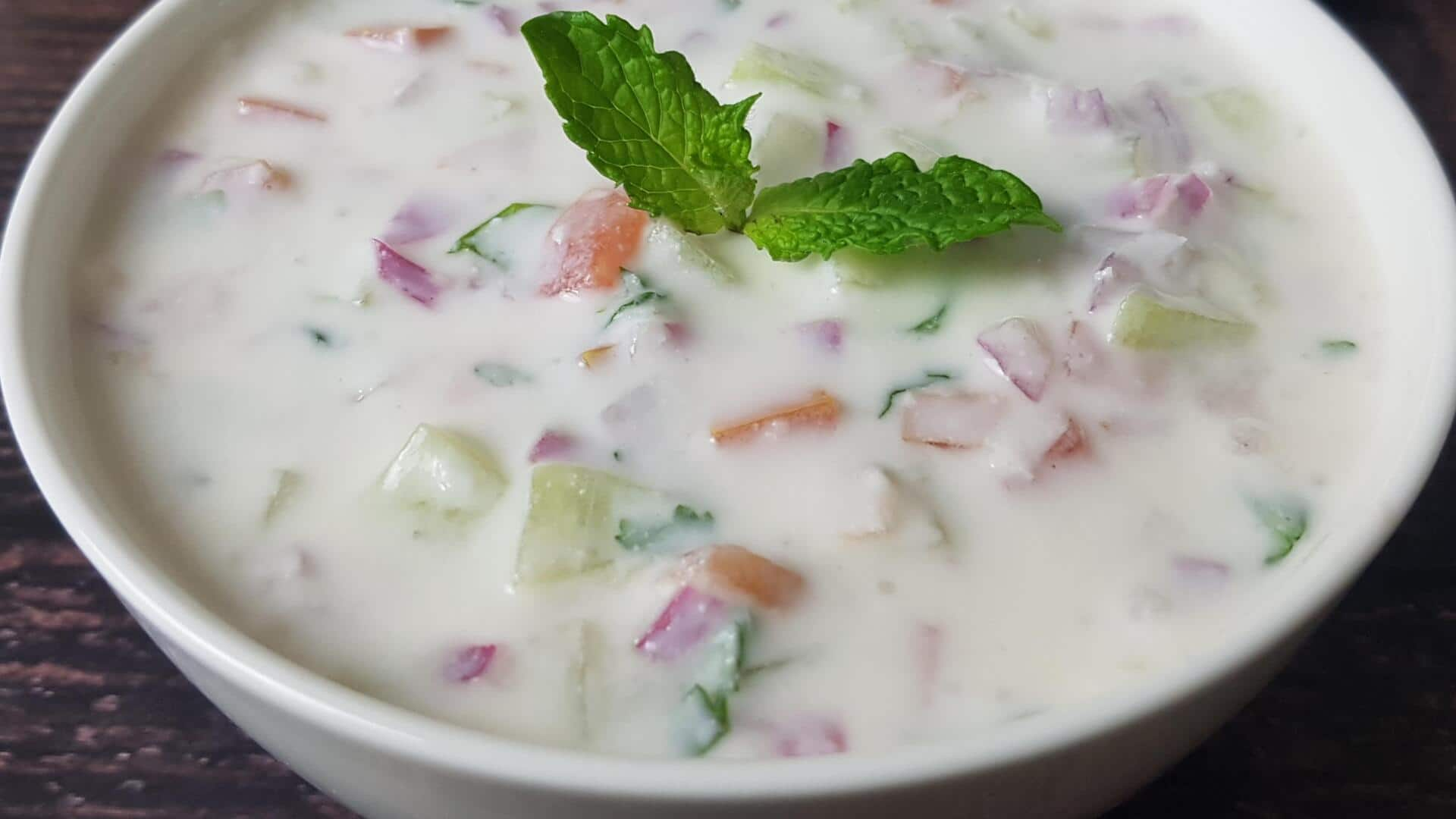
A deep dive into raita's history, variations, and health perks
What's the story
Raita, an ancient Indian side dish, has traveled through time, solidifying its place in meals across the subcontinent.
Primarily made from yogurt combined with different fruits, vegetables, and spices, its cooling effect is particularly valued in India's warm climates.
This article explores the history, regional variations, health benefits, and culinary tips related to the refreshing raita.
Origins
A dive into raita's rich history
Raita's origin goes back to the ancient times of 500 B.C. Ancient scriptures cite that Indo-Aryan settlers used yogurt for its cooling attributes.
While initially enjoyed as plain yogurt, it underwent a transformation over centuries.
Fruits and vegetables were added to not only amplify its taste but also increase its nutritional value.
This culinary evolution showcases the versatility of Indian cuisine in adapting to incorporate local ingredients and tastes.
Diversity
Regional variations across India
India's diverse regions each put their own spin on raita.
North India loves their boondi raita; the South opts for refreshing cucumber or pineapple for a hint of tangy-sweetness.
The West incorporates coconut for a tropical twist, while the East keeps it simple and satisfying with just salt and mustard seeds.
Every variation stays true to the dish's refreshing essence while introducing a new layer of flavor.
Wellness
Health benefits unveiled
Raita isn't just a tasty sidekick—it's a health hero in disguise!
Yogurt, loaded with probiotics, supercharges your digestion and boosts your immune system.
Toss in some cucumbers or carrots, and you're getting a bonus round of essential vitamins A and C, plus calcium and potassium.
Packed with water, it's the perfect way to stay hydrated in the heat or after a spicy meal. Delicious and nutritious? Now that's a win-win!
Crafting
Culinary tips for perfect raita
To make the best raita, whisk fresh yogurt until it's smooth and lump-free.
A pinch of roasted cumin powder or black salt will add a flavor punch.
And, if you want to get a little fancy, try adding some fruits. Pomegranate seeds are a good choice.
The crunch and sweet taste make a nice contrast to the salty main dishes, and they'll add a burst of flavor.